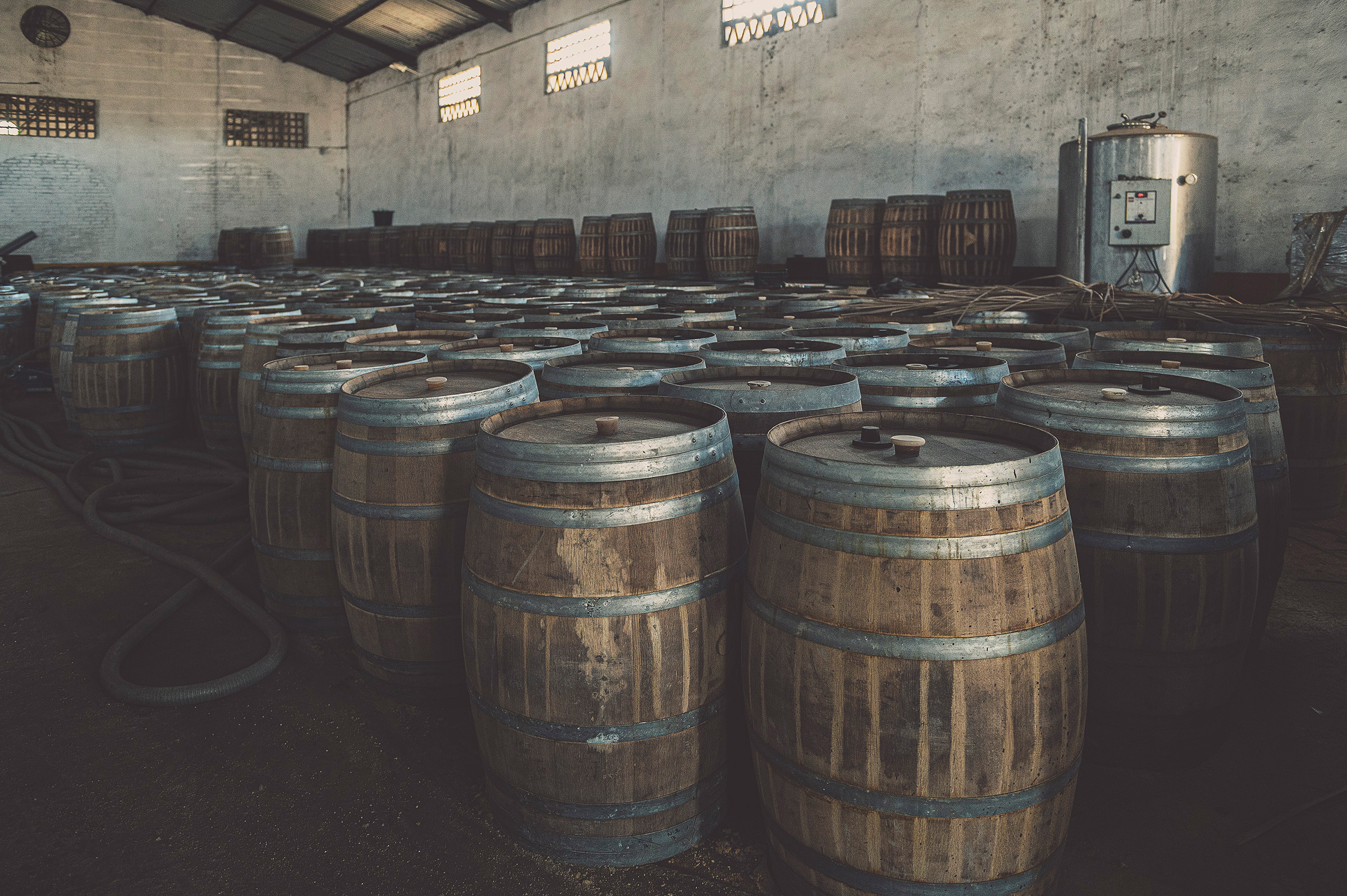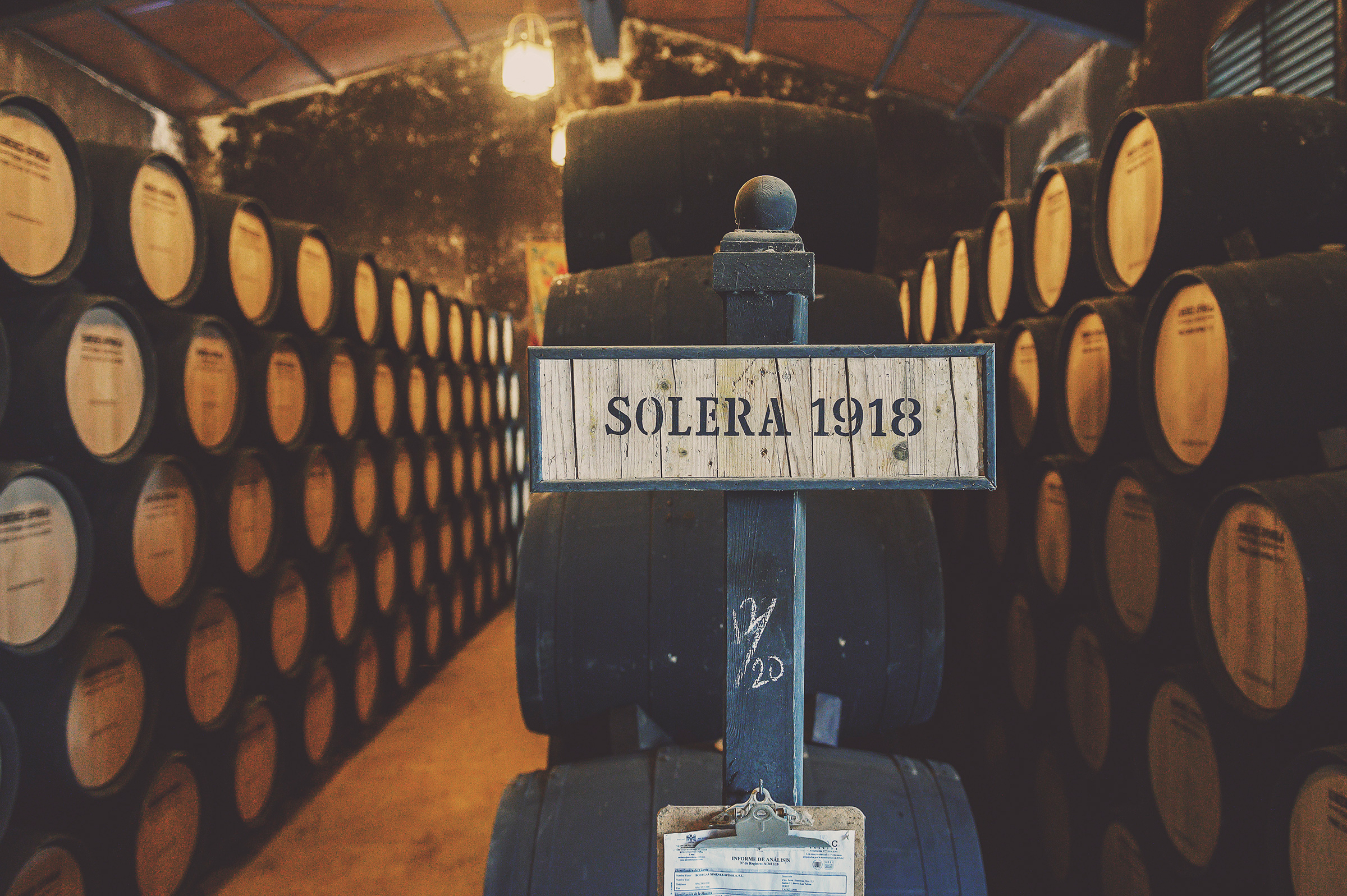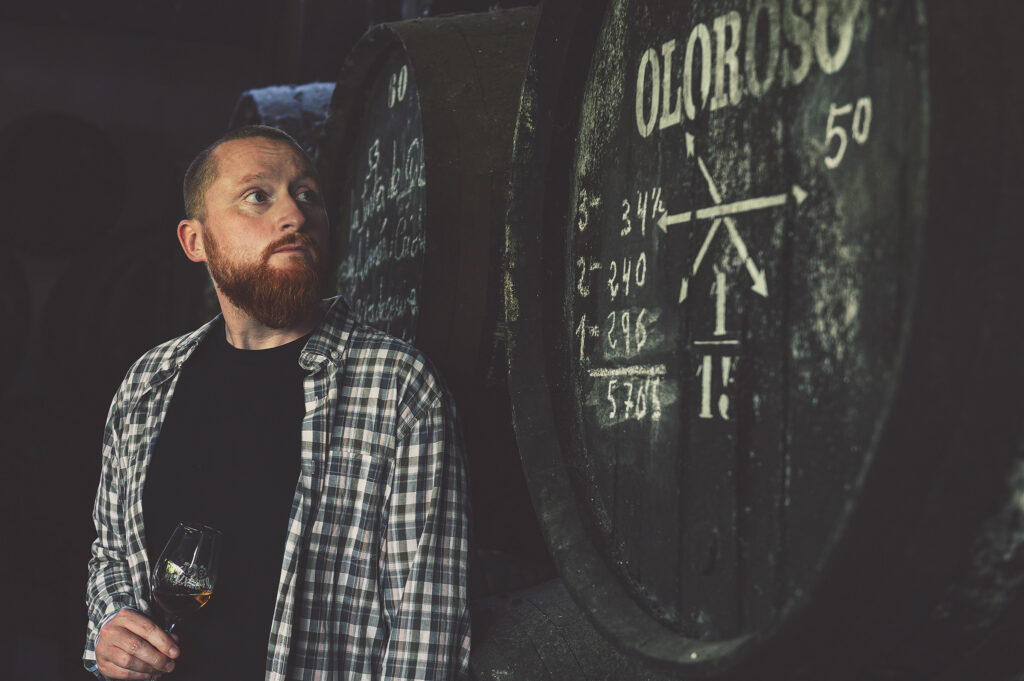The Scotch Malt Whisky Society’s first ever bottling in 1983 was a sherry-matured whisky from Distillery #1. Since then, we have bottled casks in their thousands, but as our dedicated programme to increase the volume and variety of sherry-matured whisky comes of age, 2024 is promising to be a celebration of sherry casks at the Society, with 12 months of flavourful whisky discoveries ahead of us.
The Society’s passion for sherry-matured whisky goes back to our beginnings, but if you remember the years before 2016, sherry casks were simply few and far between, so there has been quite a change of pace. To understand our evolving relations with sherry casks though, looking back through time helps, but it no longer defines the future of SMWS whisky.
That first bottling, 1.1, was a full-term sherry matured whisky. But since the first recorded release of a Society whisky that had undergone a period of additional maturation in sherry a cask in 1991, much has changed.
“In the early days of the Society, sherry casks were purchased filled with whisky and the Society’s team would simply have them refilled with new-make spirit at distilleries wherever and whenever possible,” explains spirits director Kai Ivalo. Nevertheless, even as early as in 1996 there was a first distinct attempt to do more with the Andalucian vessels.
The then-managing director Richard Gordon went out of his way to purchase sherry gordas. These are huge casks averaging 600 litres in volume, about 20 per cent more than your standard sherry butt. These giants later became famous – or infamous, as some of the most divisive expressions the Society has ever had the fortune or misfortune (depending on the specific expression and your tastes) of filling into its green bottles.
I have been lucky enough to taste a couple of those casks, starting with Cask No. 66.82: Gritty-turned-pretty, repeatedly, having bought a bottle. But also Cask No. 30.93: Tonka Bean Crème Brûlée, which was on the bar during my time at 28 Queen Street. Whatever your opinion on these two Deep, Rich & Dried Fruits whiskies, you are unlikely to forget the experience. I was quite partial to them, probably thanks to how heavy and peated that 66 distillate was and the fact that though.
But as Kai puts it: “If you’d put a light distillate in one of those gordas, it was pretty much ruined.” So indeed, a spirit with a bit more guts, smokiness or greasy texture fared better than some other previous gorda-matured offerings. Beyond this, however, the facilities being what they were at the time, “there were only a handful of very long extra maturations, but the Society didn’t have the resources to implement a larger programme of cask management,” Kai explains.
The next step
But then came the Glenmorangie era from 2004, when the Society received a lot of support from Rachel Barrie and Bill Lumsden, offering sherry casks from their stores for the SMWS to fill and do additional maturations. But even this was a far cry from a fully-fledged sherry cask management programme for the Society. As Kai puts it: “We could easily make guesses about these casks, sherry or otherwise, and their provenance, but in truth we couldn’t know for sure.”
“All we can say is that Glenmorangie was experimenting with finishing, and that we got to use some Glenmorangie casks for their second fill, so they were all fairly new and active.”

You may have been lucky enough to taste Cask No. 93.69: Props for a hammer film or 33.139: You would not believe! which are casks from this era with deep and rich sherry influence.
After parting ways with Glenmorangie in 2014, Kai remembers: “Rachel Barrie offered us a large number of former Glenmorangie casks, which then became the catalyst for our own extra maturation programme.”
Quantity and quality
But despite the experiments in extra maturations and beginning to see bigger cask filling campaigns with distilleries, the decision to go big on sherry only took hold in 2019. “At that time, only 16 per cent of our releases came from a sherry cask,” says Kai. “So, we decided to aim higher.” Though the Spirits Team’s work is far from over, practically, you could say that this year, every third bottle coming off our bottling line has resided inside a sherry cask, anywhere from a minimum of two years to its entire maturation.
But it’s not all about quantity, this quest for more of the sought-after Deep, Rich & Dried Fruits quality malts has fundamentally changed the Society’s approach to sherry cask management. From times where there rarely was full traceability on the maturing vessels used, the Society has moved on to an entirely new chapter, one focused on the highest quality and variety possible. Walking this path has required much work and huge investment, but it has distinctly improved the Society’s control on every aspect of the maturation process. Working hand in hand with cooperages, for instance, has allowed Euan Campbell and the Society’s Spirits Team to bring its members a wealth of nuances across the flavour spectrum, playing on the type of oak that casks are made from and how they are treated.
Beyond wood, collaboration with several bodegas in Spain is bearing fruit and has allowed Euan and Kai to commission casks made specifically for the Society, using different types of sherry. Neither is it just about ‘seasoning’ casks with sherry either. Although each bodega does things differently, some of our partners wish to bottle much, or all of the sherry filled into casks made for the SMWS as their own, which is a huge vote of confidence. Wine quality and length of wine maturation is therefore monitored scrupulously to make sure the casks provide the best quality whisky once in Scotland.

Moreover, many sherry producers are reluctant to part with their own casks, which they have used for many a year. Indeed, a well-used cask is a perfect cask for most sherry producers, as they are traditionally not after oaky flavours. Despite all that, building bridges and relationships has given us access to actual bodega casks, which have spent many years holding sherry before moving on to maturing an SMWS whisky. The three first examples of SMWS whiskies extra-matured in former bodega casks were interestingly all from distillery 125. Another intriguing fact about Cask Nos. 125.77: Graceful elegance, 125.78: Refined rancio and 125.79: Fabulous fruit fondants is that they all matured in former bodega PX casks and all landed in the Sweet, Fruity & Mellow flavour profile.
Indeed, there are many nuances of sherry influence to sip and ponder beyond the ones landing in the traditional Deep, Rich & Dried Fruits category. Many strike the Tasting Panel as belonging in profiles such as Oily & Coastal, Spicy & Sweet, Spicy & Dry or even Juicy, Oak & Vanilla categories that we traditionally associate with bourbon casks.
Not that the sherry isn’t strong with those drams, they just show different sides of it.
Use the link below to find out more about how the Society works with sherry casks with our Q&A with head of whisky creation, Euan Campbell: https://zx81.ch/smws-sherry

